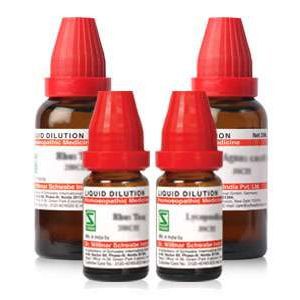
Acid Reflux (GERD) : Symptoms, Causes, Treatment
- Dr. Aditi Sharma
- January 27, 2022
- No Comments

Acid reflux refers to the condition in which the acid in the stomach goes back up into the esophagus or food pipe. Gastroesophageal reflux disease or GERD is diagnosed when there is acid reflux more than twice a week. It is the most common digestive disease, especially in Western countries. However, if continued for a long, it can cause serious complications.
What causes acid reflux?
Our stomach contains a strong acid, namely hydrochloric acid, which helps break the food into smaller forms. The esophagus is a tube-like structure through which the food goes from the mouth into the stomach.
There is a ring of muscle called the gastroesophageal sphincter at the end of the esophagus. It is designed to act as a valve and allow the food to enter the stomach but prevent its backflow into the esophagus.
When this valve fails to function normally, stomach contents are regurgitated into the esophagus. Also, the stomach lining is adapted to protect it from this strong acid, but unfortunately, the esophagus is not thus adapted.
When some of this hydrochloric acid present in the stomach flows back into the esophagus, this gives rise to the various symptoms of acid reflux.
What are the risk factors of acid reflux?
The various risk factors that are associated with acid reflux are:
- Obesity
- Active or passive smoking
- Sedentary life
- Certain medication such as painkillers, sedatives, calcium-channel blockers, antihistamines, antidepressants, and drugs to treat asthma
- Pregnancy
- Hiatal hernia- In this, a hole in the diaphragm allows the entry of the upper part of the stomach into the chest cavity, leading to GERD. Food and diet- Certain food such as alcohol, caffeine, low fibre diet, having large meals, high salt intake, lying down 2-3 hours after meals, consuming excessive acidic juices, carbonated drinks, and chocolate.
Also Read Acidity In The Morning: 5 Easy Tips To Reduce
What are the sign and symptoms of Acid Reflux?
The various sign and symptoms of acid reflux are:-
- Heartburn – This refers to the burning sensation felt behind the breastbone area. It can move up towards the throat and neck. It worsens after eating lying down or bending over. At times the stomach acids reach the back of the throat and cause a sour or bitter taste.
- Heartburn may be due to a single episode of excessive eating or may persist two or more times in a week. In the latter condition, it is called GERD.
- Persistent, dry cough
- Wheezing
- Nausea
- Vomiting
- Soreness, laryngitis or hoarseness in the throat
- Pain or difficulty in swallowing
- Upper abdominal or chest pain
- Dental erosion
- Bad breath
Also Read Acidity In Night - How Can You Stop Acidity At Night?
What are the complications of acid reflux?
The various complications are mainly due to the damage to the esophagus from persistent exposure to gastric juices. These include:-
1. Esophagitis
In this, there is inflammation of the esophagus lining. It results in irritation, bleeding, and even ulcers in the esophagus.
2. Strictures
This refers to scars produced in the esophagus due to damage caused by stomach acids. This in turn leads to difficulty swallowing as the food gets stuck while going down the esophagus.
3. Barrett’s Esophagus
This is the most severe complication. Due to persistent exposure to gastric fluids, there are changes in the cells and tissues which line the esophagus. They even have the probability of developing into cancerous cells.
What are the diagnostic tools for Acid Reflux?
The various diagnostic tools for GERD are:-
- Endoscopy or camera imaging
- Biopsy
- Barium- X-ray
- Esophageal manometry- For measuring the pressure of the esophagus
- Impedance monitoring- For measurement of fluid movement rate along the food pipe.
- pH monitoring- For acidity testing.
What are the management tips for Acid Reflux?
The essential management tips for acid reflux are:-
- Take a healthy and balanced diet.
- Restrict fatty food intake.
- Avoid eating 2-3 hours before sleeping.
- Elevate the head of the bed before lying down.
- Avoid tight-fitting clothes.
- Avoid straining and heavy lifting.
- Avoid food triggers such as caffeine, alcohol, spicy food, acidic foods, or foods that cause flatulence and bloating.
- Having moderate weight.
- Quit smoking
- Regular exercise
- Eating small meals and more frequently
- During pregnancy lifestyle changes such as having 5-6 small meals in a day, not lying down at least within an hour after meals and avoiding spicy and fatty foods is recommended.
It is essential to know that these lifestyle changes may not help everyone.
What is the treatment available for Acid Reflux?
The conventional system of medicine for the treatment of acid reflux has many drawbacks. Antacids are commonly used drugs to treat acid reflux.
But it is seen that the patients get used to them and then need stronger medications to treat acid reflux. Many of these stronger medicines can have potential side effects, including cancer.
Homeopathy on the other hand provides a safe and effective solution for the treatment of this problem. Except for severe cases that may require surgical intervention homoeopathy effectively treats GERD. It helps to regulate increased gastric acid production and improve digestion. It also strengthens the Lower esophageal sphincter that helps treat acid reflux.
The best homeopathic medicine for acidity is constitutional medicine. For this, a trained homoeopathic physician takes a detailed case record of the patient.
Other commonly indicated homeopathic medicines for acidity are:-
IRIS VERSICOLOR: It is used when there is burning of the whole digestive system. There is low appetite, profuse salivation and nausea with frontal headache. The headache begins with a blur before the eyes.
NATRUM PHOSPHORICUM: There is sour eructation, vomiting, dysphagia and greenish diarrhoea. There is a yellow, creamy coating at the back of the tongue and roof of the mouth.
NUX VOMICA: In this, the tongue is coated white posteriorly along with nausea and a sour taste in the morning, after eating. There is a frequent and ineffectual urge for vomiting and stool. The patient as a person desires fatty, spicy food and stimulants.
PHOSPHOROUS: There is burning in the esophagus and stomach with a desire for a large quantity of very cold water. There is a sour taste and regurgitation of ingesta by mouthfuls. Water is vomited as soon as it gets warm in the stomach.
ROBINIA: Acidity is accompanied by frontal headache, intensely acrid eructation, nightly burning pains in the stomach and constipation with urgent desire.
-
 Nux vomica CHSale Product on sale
Nux vomica CHSale Product on sale₹100.00₹82.00 -
 Iris versicolor CHSale Product on sale
Iris versicolor CHSale Product on sale₹100.00₹82.00 -
 Natrum phosphoricumSale Product on sale
Natrum phosphoricumSale Product on sale₹110.00₹90.20
CONCLUSION
Acid reflux is a common digestive problem. It refers to the backflow of stomach fluid into the food pipe. If it occurs more than twice a week it is called GERD. Heartburn, dry cough, wheezing, nausea, pain throat and difficulty swallowing are typical signs and symptoms of GERD.
Risk factors such as obesity, smoking, fatty, spicy food, excessive alcohol, sedentary life, pregnancy, and faulty practices such as hurried eating, and lying down within 2-3 hours of having meals are attributed to GERD. If left untreated, it can lead to esophagitis, strictures, and Barrett’s oesophagus.
Taking a balanced and nutritious diet, plenty of fluids, regular exercise, restricting alcohol and individual food triggers, eating frequent and small meals, and avoiding lying down 2-3 hours after meals are management tips for GERD. Homeopathy provides safe and effective treatment for acid reflux.
































